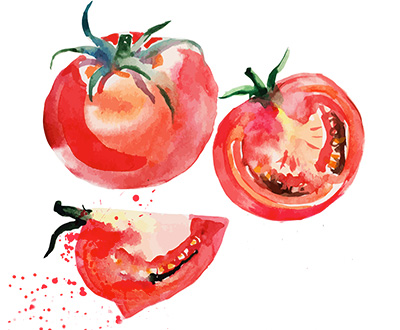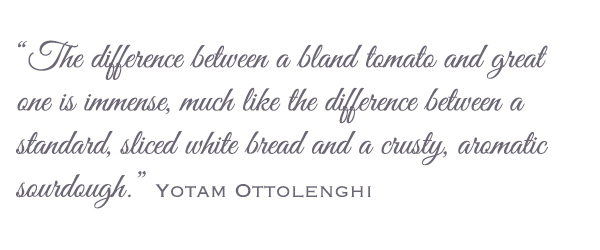Featured Ingredient ~ Italian Tomatoes ~ Why Do They Taste So Good?
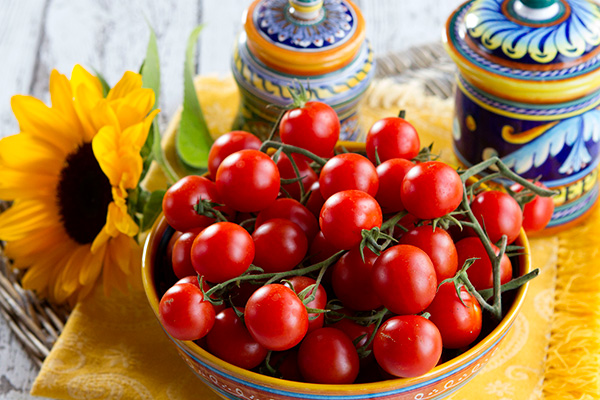
If one fresh ingredient were considered to be the very emblem of summer in an Italian garden, it would have to be the tomato. As warmer weather approaches, we begin to dream about the first “real” tomato …… a truly vine ripened, sweet, firm fleshed tomato whose aroma is like no other.
I simply love ripe, fresh tomatoes, and we grow a few different varieties in our orto (vegetable garden) here at our Umbrian farmhouse each summer. I always plant a couple of Datterini plants, which are always very prolific producers, meaty San Marzano tomatoes, and one of my favorite varieties, the Grapolli tomato, which stores extremely well, and is my favorite variety to make Sicilian Tomato Jam.
Whether its the sweet, Sicilian Datterini tomatoes which are delicious sliced in half and used on pizza or tossed raw with hot pasta, or the meatier San Marzano plum tomatoes that are wonderful used in sauces or light vegetable soups, I simply cannot get enough Italian tomatoes and always have a bowl full sitting on my kitchen counter!
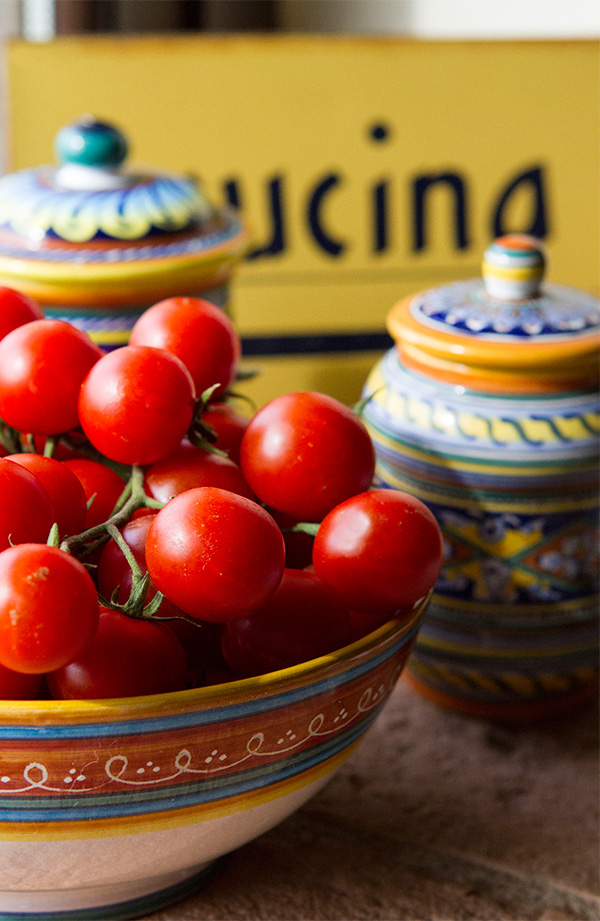 It is written that Cristoforo Colombo brought back the tomato to Italy after his second voyage, and although Romans were known to have eaten pasta long before the tomato ever appeared, by the late 1600s recipes in cookbooks began to combine the two foods, and we have never looked back.
It is written that Cristoforo Colombo brought back the tomato to Italy after his second voyage, and although Romans were known to have eaten pasta long before the tomato ever appeared, by the late 1600s recipes in cookbooks began to combine the two foods, and we have never looked back.
At this point, one cannot imagine Italian food without tomatoes, particularly in combination with pasta. There are thousands of different varieties of tomatoes now, but all do not work well in sauce. Generally, large, juicy tomatoes have too much water content to be ideal, where tiny cherry tomatoes tend to be too acidic when cooked.
Probably Italy’s most famous tomato used for sauce would have to be San Marzano. This is a variety of plum tomato whose dense, sweet flesh makes them the ideal sauce tomato. Remember that a superb tomato sauce should be fresh and lively, and most of all satisfying to both stomach and soul.
My favorite way to eat a large vine ripe tomato, such as the Bull’s Heart variety, is to slice it warm off the vine, and simply sprinkle it with coarse sea salt, cracked black pepper, and some superb quality extra virgin olive oil. If you want to get a little more elegant, you could add a drizzle of aged balsamic vinegar, some finely chopped fresh basil, and some crumbled goat cheese. Delicious!
It is interesting to note, that the tomato is a member of the nightshade family along with potatoes, eggplants, and tobacco. Although botanists claim that tomatoes are actually fruits and not vegetables, it does not matter once you bring that tomato into the kitchen, as most will use tomatoes in savory preparations rather than sweet ones.
If you are making sauce from fresh tomatoes, they should be seeded first, which is simply carried out by cutting the tomato in half, and gently squeezing it over the sink. I skin my tomatoes before removing the seeds, and the easiest way to do this is to cut an X across the core end before cutting it in half, and then drop the tomato into boiling water for 10 seconds, then submerge in an ice water bath.
The skin should slip off easily. When buying tomatoes, choose ones with smooth, unblemished skins, and to store, you should never refrigerate a tomato as cold temperatures destroy both flavor and texture. Instead, store the tomatoes stem side up in a bowl on the countertop, out of the sun. Unripe tomatoes will ripen if placed in a paper bag.

Tomatoes Growing In Our Orto
The holiday company Kuoni is celebrating Italian tomatoes by speaking to Natoora’s tomato growers from different regions of Italy. Farmers in Italy are specialists, in that they work hard to cultivate unique varieties of tomatoes that match the geological make-up of their particular regions.
For example, Francesco, a farmer growing yellow and red Datterini tomatoes in Sicily, credits the island’s watery history for the quality of flavor of his crop. Francesco says “I grow my tomatoes in an area of Sicily that was covered by the sea in ancient times; you can still find seashells on the ground here. The salty earth and rich mineral deposits, combined with the region’s low humidity and plentiful sunshine, make for ideal growing conditions.
My Datterini variety is reluctant to grow, it’s not a high yielding variety, but it tastes incredible.” Signs of a quality Datterini tomato include thin skin, soft flesh and a low seed count. Having just returned from a trip to Sicily recently, I can attest to the fact that the tomatoes grown there are fabulous!
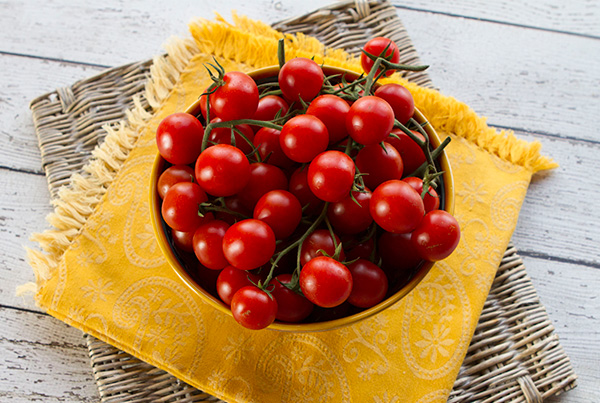 In the southern Italian region of Campania, Rafaelle’s family have been growing the larger Cuore del Vesuvio (Bull’s Heart Tomatoes from Vesuvius) for generations. Rafaelle says “Red Bull’s Heart is a typical variety of this area and my family has grown them on the slopes of Mount Vesuvius for generations using seeds we’ve saved each year.
In the southern Italian region of Campania, Rafaelle’s family have been growing the larger Cuore del Vesuvio (Bull’s Heart Tomatoes from Vesuvius) for generations. Rafaelle says “Red Bull’s Heart is a typical variety of this area and my family has grown them on the slopes of Mount Vesuvius for generations using seeds we’ve saved each year.
I’ve been growing a Black Bull’s Heart variety for just over a year now. The volcanic soil and nearby sea provide an ideal environment. The Black Bull’s Heart is sweet and only slightly tart, with a dense, meaty texture and almost black skin.”
Kuoni also worked with award-winning food photographer Nadege Meriau who was inspired by how the region’s geology affects Italy’s tomatoes, and her unique images reveal the complexity of Datterini, Marinda and Black Bull’s Heart tomatoes. (See Photos Below).
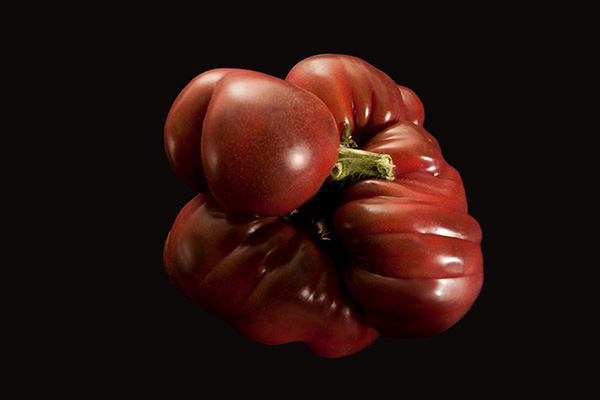
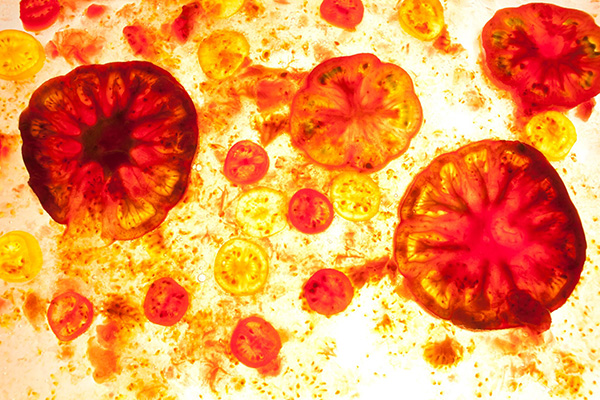
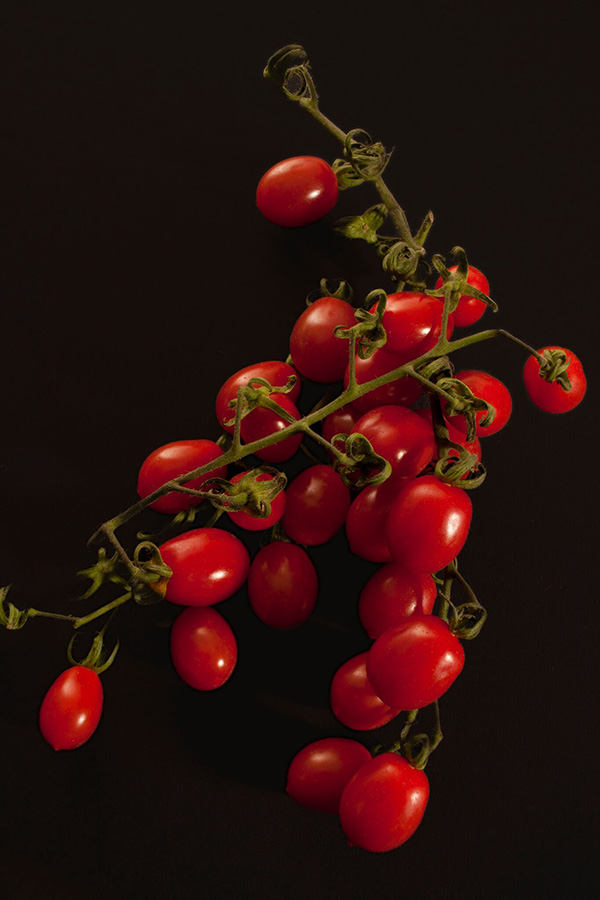
Francesco and Rafaelle’s Datterini and Black Bull’s Heart tomatoes are available to order through Natoora, a London based fruit and vegetable wholesaler who specializes in sourcing the finest flavored produce in Europe.
Please Note: This post has been sponsored by Kuoni holiday company.
Click HERE to learn more about Kuoni’s Italian Tomato project.
Buon Appetito!
Deborah Mele
June 2016

